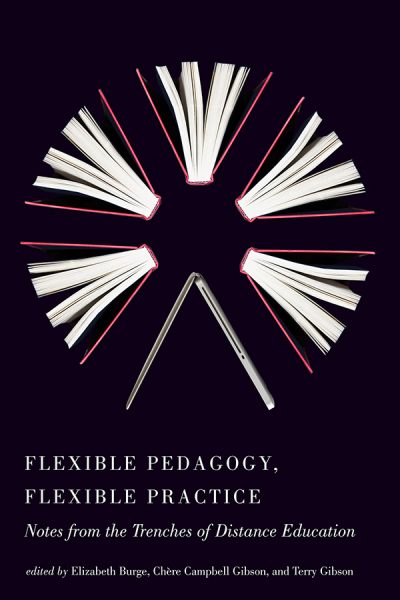Feminist Pedagogy for Teaching Online
edited by Jacquelyne Thoni Howard, Enilda Romero-Hall, Clare Daniel, Niya Bond, and Liv Newman

Flexibility has become a watchword in modern education, but its implementation is by no means a straightforward matter. Flexible Pedagogy, Flexible Practice sheds light on the often taken-for-granted assumptions that inform daily practice and examines the institutional dynamics that help and hinder efforts toward flexibility. The collection in international in scope, drawing on the experience of specialists in distance education from North America, the United Kingdom, Australia and New Zealand, South Africa, Singapore, and Japan. Contributors to the volume were asked to reflect candidly and critically on a series of questions, including: What precisely is flexible learning? Who or what is driving the flexibility agenda, and for whose benefit? And who or what is resisting it? What challenges must be overcome in order to achieve flexibility, and what are some of the compromises it can entail?
Essentially, the book is about what happens when the canonical concept collides with the ‘rough terrains of practice,’ and in addressing this question, it succeeds admirably. … Your thinking will be both challenged and informed.
David Murphy
A refreshingly honest, hard-edged attempt to get to the heart of what flexibility really means for instructors, students, and administrators working in tertiary institutions. … Above all [the reader emerges] from these deeply contextual chapters, set in a diversity of geographical and cultural milieus, convinced of the importance of taking a situated view of flexibility as a counterweight to sloganeering. This book should be a must-read for university educators, researchers, administrators, managers, and policy makers.
Educational Technology
Pulling no punches, these chapters tell stories about fearful and overworked faculty, turf wars, rigid bureaucracies, complicating technological infrastructures, staff and funding cuts, and slashed programs. But they also show us how high-quality courses and programs can be built through successful collaborations of people with a shared vision. … The editors are to be commended for organizing this eclectic selection of narratives and reflections into a coherent, extremely readable, and meticulously edited volume on the realities of flexibility in higher education.
Educational Technology, Research and Development
This is an important book for distance educators with an interest in international education and the challenges of distance delivery from a global experience. The significance of this compilation of essays is that it is the first step in a process to create a much needed dialogue on the issue of flexibility in education, with the intent of establishing standards for universal access to education.
Educational Technology & Society
In this excellently edited and stimulating book, targeted at all interested in post-secondary education, practitioners in the fields of flexible pedagogy and distance education across the globe share and critically reflect on experiences of flexibility grounded in the gritty reality of practice.
British Journal of Educational Technology
This work is licensed under a Creative Commons License (CC BY-NC-ND 2.5 CA). It may be reproduced for non-commercial purposes, provided that the original author is credited.